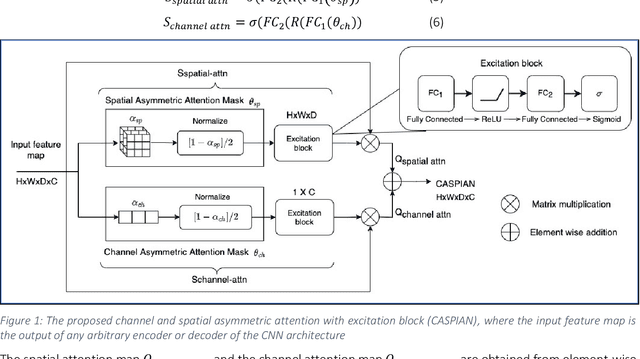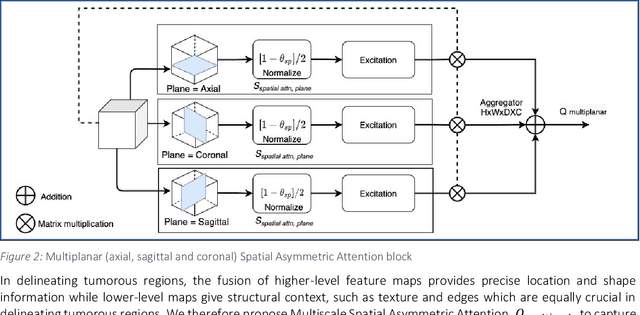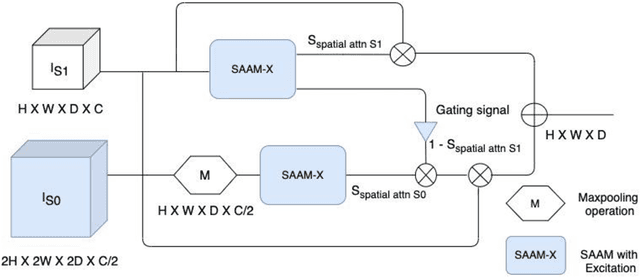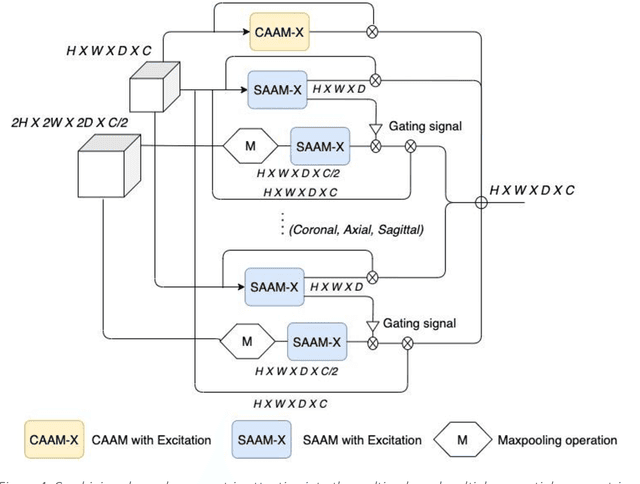CASPIANET++: A Multidimensional Channel-Spatial Asymmetric Attention Network with Noisy Student Curriculum Learning Paradigm for Brain Tumor Segmentation
Paper and Code
Jul 08, 2021



Convolutional neural networks (CNNs) have been used quite successfully for semantic segmentation of brain tumors. However, current CNNs and attention mechanisms are stochastic in nature and neglect the morphological indicators used by radiologists to manually annotate regions of interest. In this paper, we introduce a channel and spatial wise asymmetric attention (CASPIAN) by leveraging the inherent structure of tumors to detect regions of saliency. To demonstrate the efficacy of our proposed layer, we integrate this into a well-established convolutional neural network (CNN) architecture to achieve higher Dice scores, with less GPU resources. Also, we investigate the inclusion of auxiliary multiscale and multiplanar attention branches to increase the spatial context crucial in semantic segmentation tasks. The resulting architecture is the new CASPIANET++, which achieves Dice Scores of 91.19% whole tumor, 87.6% for tumor core and 81.03% for enhancing tumor. Furthermore, driven by the scarcity of brain tumor data, we investigate the Noisy Student method for segmentation tasks. Our new Noisy Student Curriculum Learning paradigm, which infuses noise incrementally to increase the complexity of the training images exposed to the network, further boosts the enhancing tumor region to 81.53%. Additional validation performed on the BraTS2020 data shows that the Noisy Student Curriculum Learning method works well without any additional training or finetuning.
 Add to Chrome
Add to Chrome Add to Firefox
Add to Firefox Add to Edge
Add to Edge